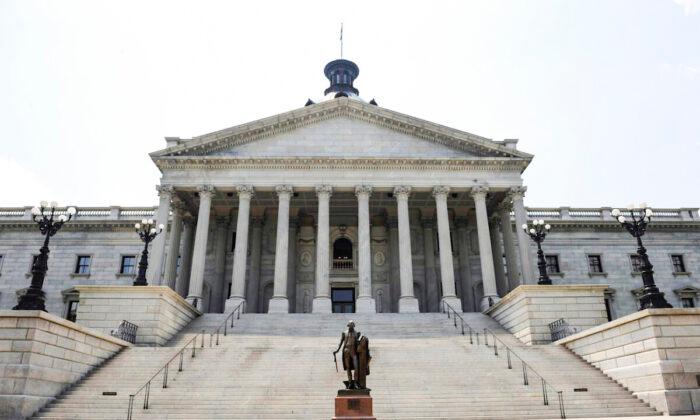North America’s largest railport terminal has risen from out of a swamp in Savannah, Georgia.
The Mason Mega Rail Terminal makes Savannah the third-largest port in the United States, according to Georgia Gov. Brian Kemp.
At a ribbon-cutting ceremony on Nov. 12, Kemp announced that the new terminal would raise the port’s rail capacity by up to 2 million containers per year—a 30 percent increase.
This work would help fix supply chain issues, he said.
“The 85-acre rail yard is the largest of its kind for [a rail] port terminal in North America,” Kemp said as rail-mounted gantry cranes steadily lifted containers onto trains in the background. “There’s nothing else like this in the United States.”
The new terminal will allow the port to process about 6 million containers of cargo per year.

“This is a kind of unique project because we have to maintain the rail traffic,” said Jonathan Barnhart, the senior project manager for G.W. Peoples, the contractor that built the terminal.
The nine new railroad tracks double the port’s train capacity.
Barnhart said he still has an additional 25,000 feet of track to lay so the port can store rail cars.
The new terminal joins its adjacent sister, which has been in operation since early 2021 and is just one more phase of the project.

“The Georgia Ports has been investing for years now,” Lynch said. “We did a billion dollars in the last six years, [and plan to do] $4 billion in the next 10.
“We have a long history of growth, so regardless of what’s happening right now we still want to keep investing in our ports.”
Ports require an interconnected set of machines that all take space, time, and skill to function—ships, ship berths, cranes, trains, forklifts, truck beds, and trucks.
More railroads can solve some of these issues by lessening the infrastructure burden on the port’s immediate area.
“Use of these sites will not only ease movement of cargo across the terminal, but it will also speed up vessel service,” Kemp said.
Lynch said that the “inland ports” will let truck drivers carry containers shorter distances.
Good Timing for Upgrades
Savannah’s port upgrades have finished just in time to help ease the supply chain issues faced by U.S. ports. Even so, its backlog issues remain far from normal.For the past few months, Savannah had between 25 and 30 ships waiting offshore, Lynch said. Now, there are 15 to 20 ships at anchor.
“We’re working on it,” he said.
The port still has the same 80,000-container backlog it had on Oct. 20, Lynch said. However, the containers now waiting are newer.
In October, the port shipped out 60 percent of the containers that had been waiting a long time for delivery.
The backlog is so severe that it has continued despite gains in efficiency by the port, said Lynch.
In the past eight weeks, the time containers spend waiting at the port has decreased by 60 percent, Lynch said. The port will be better able to eliminate its container backlog as the number of waiting ships decreases, he added.




